On my 1-acre Tennessee property, I have an old 100+ year old barn situated behind my house that I’ve been looking to sell for some cash. The barn is timber-framed and still has the majority of the original board and batten siding still intact. Recently, to examine the type of wood used in the structure of the barn, I removed an old rough sawn 2×8 and cut it in half. After cutting the board in half, I found a beautiful old-growth heart pine board, and according to my knowledge, heart pine is one of the most valuable types of wood due to its incredibly slow growth, rot resistant abilities, and beautiful red-toned colors. I cut several other wood samples from the barn’s structure and found each sample to also be heart pine. I now have reason to believe that the entire barn is exclusively built with heart pine wood – otherwise, how else would the barn have lasted 100+ years?
Unfortunately, my family wants to move in the next year or so, and whoever buys my property will demolish every existing structure, including the barn, and build a large apartment complex. Because heart pine is an incredibly rare wood, I cannot, in good conscious, let this historic barn go to waste at the hands of some negligent real estate developer. To me, that would be the exact equivalent of throwing away gold.
Selling this barn wood is of the utmost importance to me, so if anyone has any advice on selling this barn, I would really appreciate it. I have attached some pictures of the barn and the heart pine 2×8 that I cut so you can see just how beautiful this wood is.
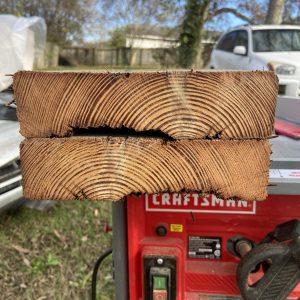
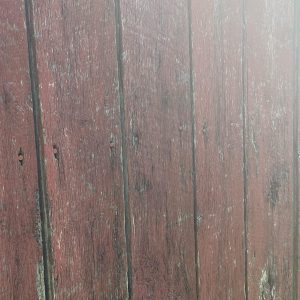
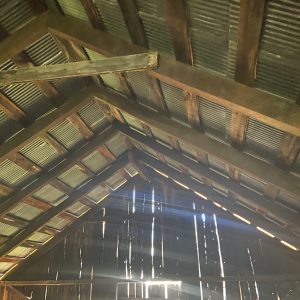
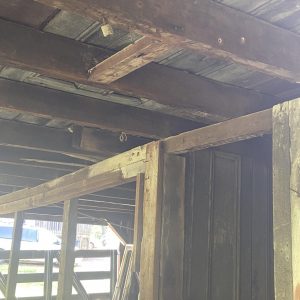
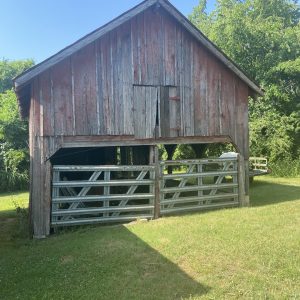



















Replies
There is a lot of work between a standing barn and useable planks.
I would suggest searching for folks who sell barn wood, and see what they say. They already are in tune with the current market, and know what they can sell things for, and how much they could pay you, pay for labor to deconstruct, sort, transport,..... you get the idea.
There may be someone local, or the interested party could send a small team to do the deconstruction.
I've already contacted several of them. Most of them cited the current state of the economy and rejected the offer, while others offered a very low price after intense negotiation.
That is why I'm thinking of taking the barn apart myself and individually selling each piece of wood based off its grade.
So you plan to go into competition with the local folks already in the business, who are not short of supply, and not competing with each other in a bidding war for your barn. They see a period of lower demand in the near future, and increased cost of capital (interest rates).
You have a deadline of a year or two to dismantle, sort, sell and deliver the boards.
As you contemplate this task, keep in mind that dismantling such a structure is going to be dangerous, and require technical understanding of the forces involved.
You also will need equipment to safely do this job. Ladders, scaffolding, bucket truck, crane. You would need a truck and/or trailer to move the product.
Also, as-is, the roofing protects the wood and allows it to air dry. Do you have a place in mind to keep the boards out of the weather as you sort and store them until you can locate buyers and arrange delivery or pickup?
As for grading the boards, how will you do this? Have you verified the wood is not contaminated with chemicals?
Good luck with the enterprise. Seems like it could prove to be a fun hobby with many challenges to overcome.
This endeavor may seem silly and irrational to some people, but I trust in my reasoning. As far as I'm concerned, none of the local folks already in business are currently selling heart pine of this grade or any type of heart pine, nor do they have any interest to further expand their inventory in the near foreseeable future, which is understandable. However, this does mean that I have no choice but to take the tedious path of dismantling and selling the barn myself if I want to have any chance of not letting this valuable barn wood go to waste.
I have already consulted someone to come test the barn for lead paint and other hazardous materials. If they deem the barn to be unsafe, I will contact a local demolition group that can accommodate buildings with toxic materials(lead, asbestos) and have them professionally tear the barn down while saving significant pieces of wood. Otherwise, if the barn is free of toxic materials, I the have the necessary machinery, skills, and assistance to properly dismantle the barn myself. I myself have a solid understanding of how the barn is structured, and my father is an engineer who will help me dismantle this barn in the safest manner possible, provided that the barn is free of toxic materials, of course.
As for toxic chemicals in the wood, I wouldn't worry about that. Fortunately, the only part of the structure that contains any chemicals is the exterior siding, which is treated with a non-toxic 20th century wood preservative.
My point is simple. I must remove this barn as soon as possible, and now I only have one year to do so, and my time is limited. If this enterprise means I get to make my local honest-working woodworkers happy and not let valuable barn wood go to waste - but with the sacrifice of attaining a small profit - so be it.
And yes, I have a dry and spacious area to store the wood while it gets sold.
In the early 70’s I got my start in the trades demo-ing barns, using or selling the wood. At the time, there was a demand in commercial business decorating which drifted into homes as well.
Here in NW Ohio there were plenty of barns from the 1800’s that were built from the native Timbers that were cleared in order to plant. They called this area the “Great Black Swamp”.
Oak, walnut, poplar,sycamore…..you name, it grew here. They took this raw material and built massive structures.
Farm machinery was changing and so the old style barns were butchered to get the larger equipment under cover. Soon enough it became apparent you couldn’t keep cutting out the structure to fit combines etc.
The barns here made yours look like a 2 car garage.
You should be able to demo it with some ladders and planks and maybe some rolling scaffold.
We salvaged almost every thing they used to put it together. Buckets of cut nails, hinges, and other metal. Most beams were hand hewn which there was a big market for. Hay mow planks 2-3 ft wide…..ironically poplar and maybe sycamore which was strong but light. 20’ long and more.
I wish I had some pictures of this crew of hippies hanging on the skeleton of these old barns.
Here, I will help you get started
https://www.google.com/search?q=reclaimed+wood+buyers+in+tennessee
“[Deleted]”
You posted to ask for comments, and you got some.
I do wish you well, but do want to point out that if one of the existing places you talked with offered you any money to take the wood, it would be saved from the landfill, and likely to get reused (and perhaps ease your conscience about the waste of it all).
You may end up with more money, doing it yourself, but this will take a lot of work and time on your part. You also may not end up with any more money after it is all said and done. (you do, of course need to be careful and pay attention to safety. I know several engineers who have had bad experiences falling from the roof with long recovery periods. They were not working at the time, but misjudged the degree to which they understood the dangers)
The last point to consider is what you are not doing while you are focused on this project.
Good luck and feel free to share photos along the way. You will be happy to have some to look back on as time goes by. I can see you would have a good feeling if you could see the products your saved wood ends up in.
My guess is that the selling will be harder than the salvage.